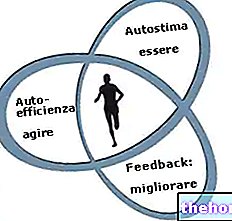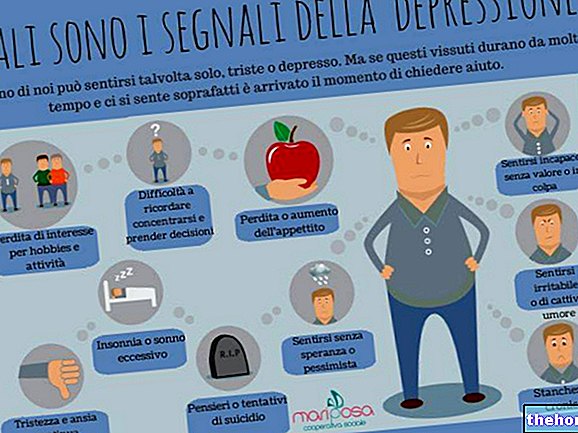Dysthymic Disorder
It is characterized by a depressed mood for most of the day, most days, for at least two years. During the period of illness the patient is never in a normal mood for more than two consecutive months. In addition, at least two of the following symptoms must be present:
- hyporexia or hyperphagia;
- insomnia or hypersomnia;
- reduced energy and fatigue;
- low self-esteem;
- poor ability to concentrate or difficulty making decisions;
- feelings of despair.
There must have been no major depressive episode during the first two years of the illness. There may have been, but it must have resolved completely before the onset of the dysthymic disorder.
If, after the initial two-year period, major depressive episodes are superimposed on the dysthymic disorder (and this happens in 75% of patients), it is called double depression.
Symptoms cause significant distress and impairment of social, work and other important areas.
The term "dysthymia" was coined in 1970 by Dr. Robert Spitzer and took the place of the previously used "depressive personality". Today, the disorder is also known as neurotic depression or dysthymic disorder, although DSM-5 recently introduced the new term Persistent Depressive Disorder (persistent depressive disorder).
Depressive disorder not otherwise specified
Includes disorders with depressive manifestations that do not meet the criteria for major depressive disorder and dysthymic disorder. The most frequent of the disorders belonging to this category is that premenstrual dysphoric. In order to diagnose this disorder, 5 or more symptoms in a series must be present, which includes:
- markedly depressed mood, despair, self-depreciation;
- anxiety and tension;
- emotional lability;
- anger or irritability;
- decreased interest in usual activities;
- difficulty concentrating;
- drowsiness and easy fatigue;
- marked changes in appetite, overeating and compulsive search for certain foods (especially carbohydrates and sweets);
- insomnia or hypersomnia;
- feeling of being on the verge of losing control;
- physical symptoms: breast enlargement with pain, swelling, weight gain, joint pain.
At least one of the symptoms must be in the top four. In addition, the same must have occurred during the week preceding menstruation in most of the menstrual cycles for the previous 12 months. These symptoms are always absent in the week following menstruation. The intensity, but not the duration, of the symptoms are of comparable severity to that of major depressive disorder and must cause an evident and marked impairment of social and occupational functioning for the period in question (including quarrels with spouse, friends and family members).
At least 75% of women experience isolated or minor premenstrual changes, 20-50% suffer from "premenstrual syndrome" while the disorder in question would affect 3-5% of women.
Other articles on "Dysthymic Disorder"
- Major depressive episode symptoms
- Symptoms Depression
- Depressive disorders: major depressive episode
- Mania and manic episode
- Bipolar disorder
- Depression - Drugs to Treat Depression
- Antidepressants, drugs for depression
- Antidepressants
- Depression and hypericum



















-nelle-carni-di-maiale.jpg)








